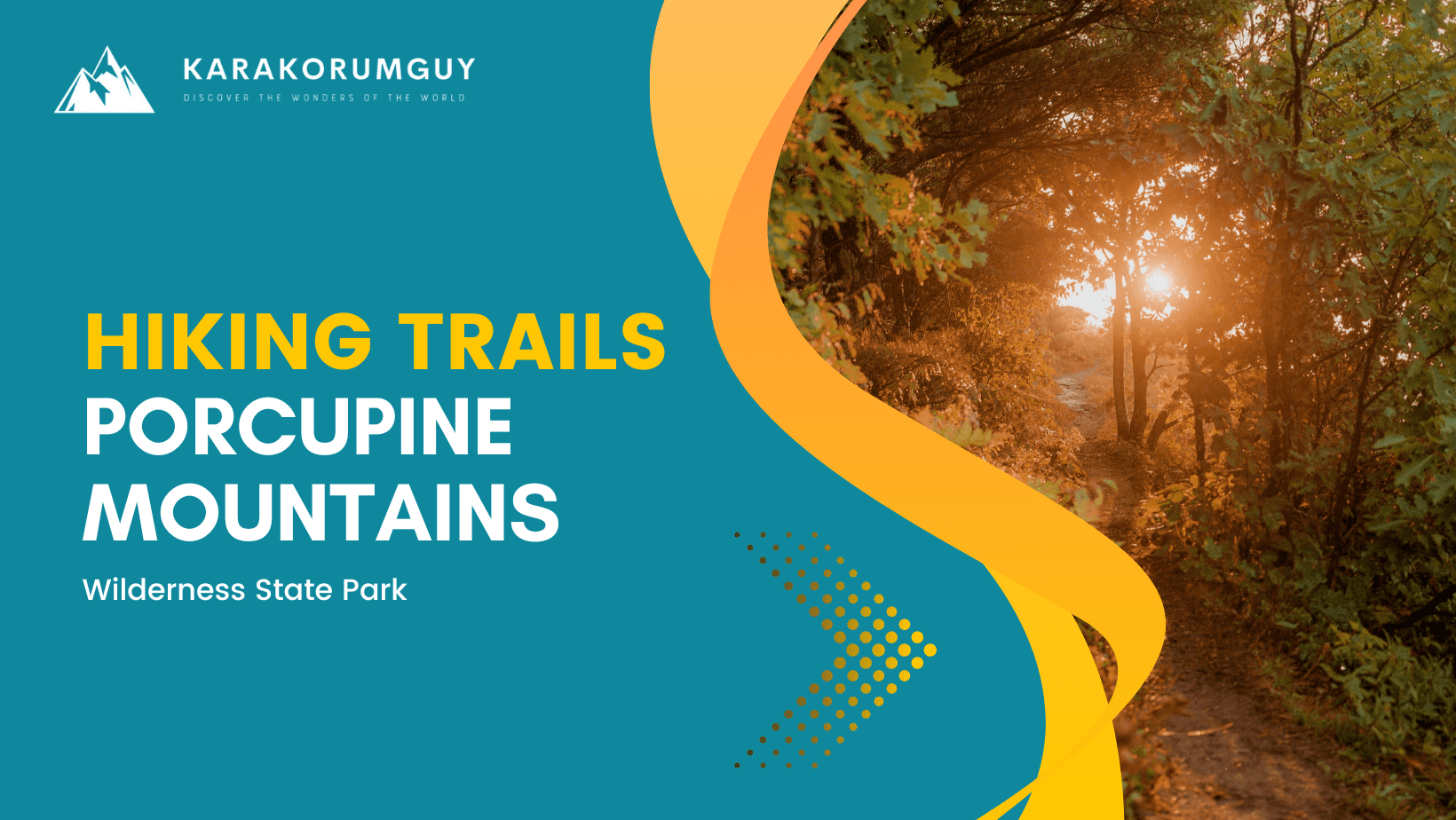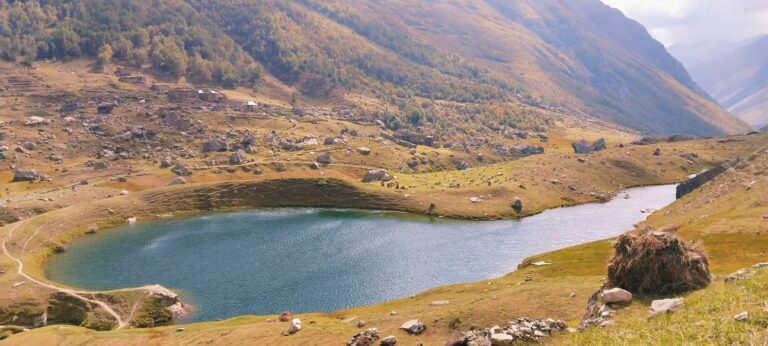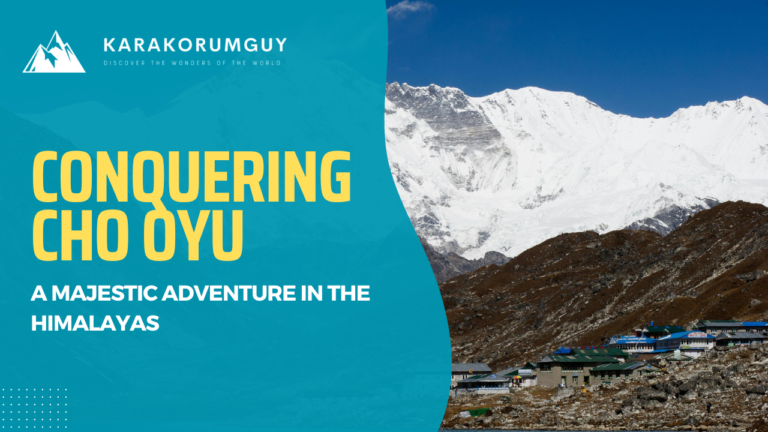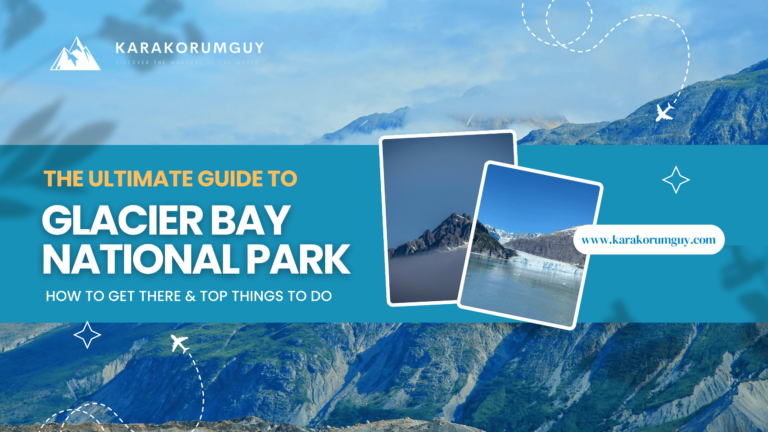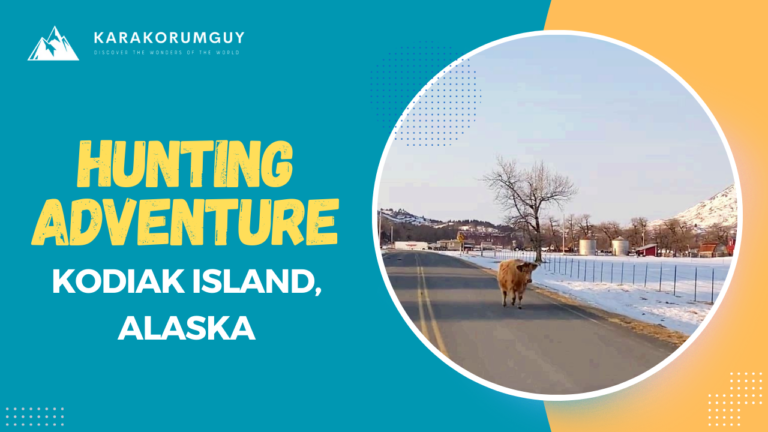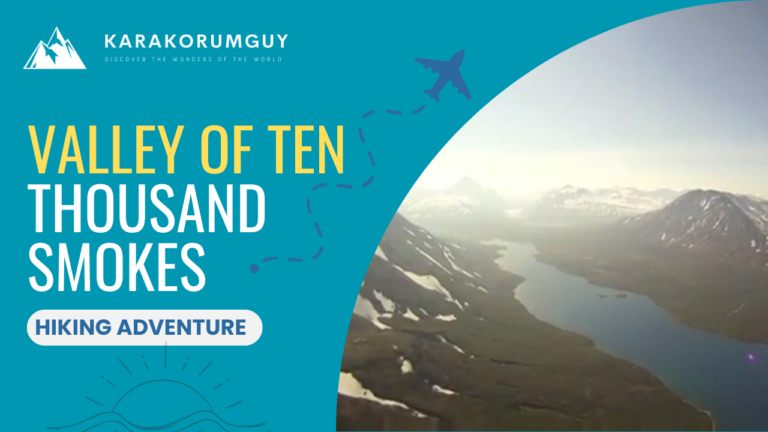The Best Porcupine Mountains Hiking Trails
Are you tired of your busy life and craving some hiking adventure? Then look no further than the Porcupine Mountains hiking trails. This stunning destination has everything you need for an unforgettable hiking experience.
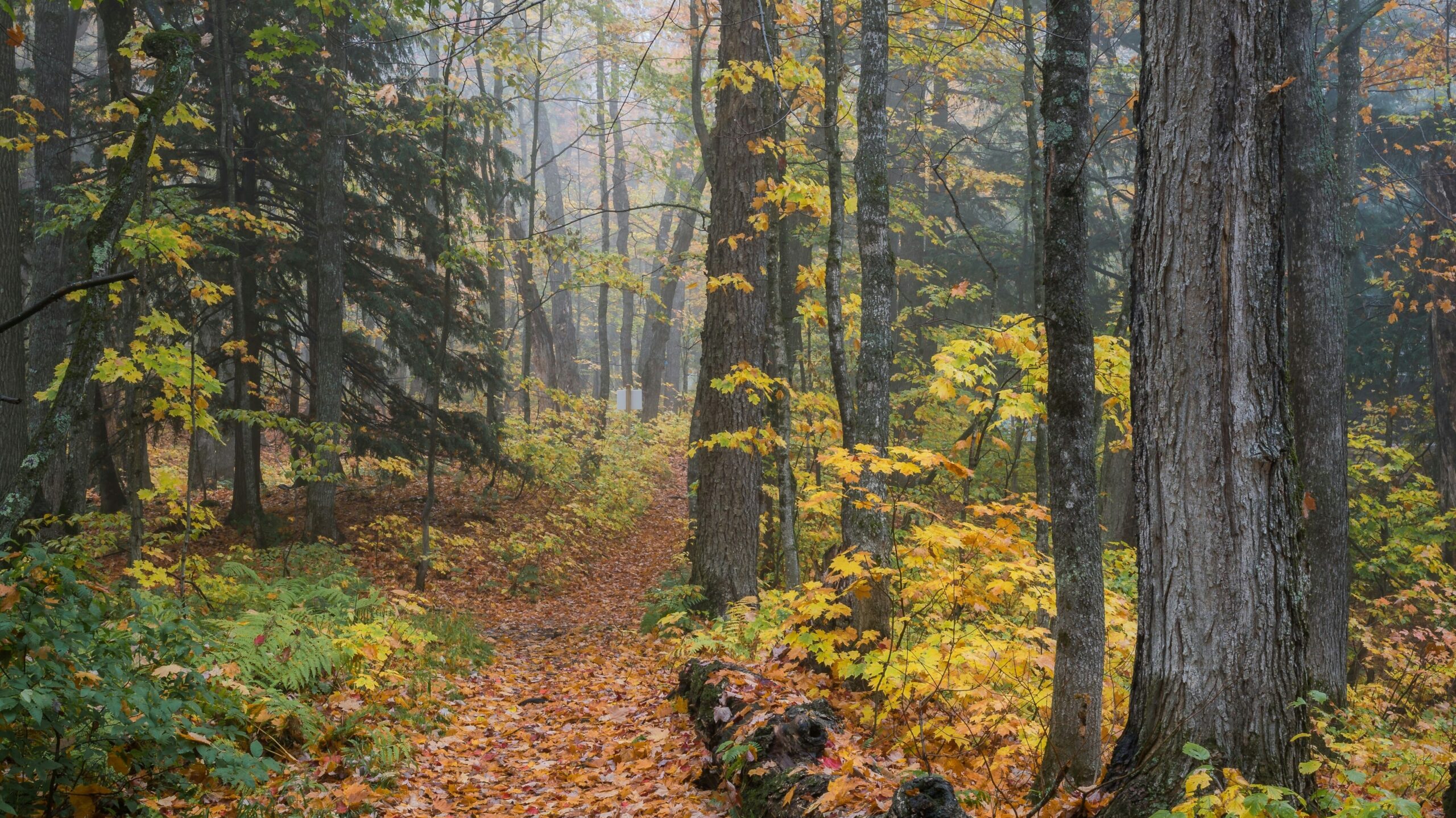
In this blog post, we’ll explore about Porcupine Mountains Hiking Trails and things to do in this place. Additionally, we’ll cover everything you need to know to plan your trip, like what to bring, safety guidelines and best time to visit. Furthermore, this guide will provide recommendations on where to stay, and how to get to Porcupine Mountains.
So, let’s delve deeply into the details of this stunning destination:
Where are Porcupine Mountains Located?
The Porcupine Mountains are situated in the Upper Peninsula of Michigan, USA. This ancient mountain range is renowned for its rugged beauty, dense forests, and stunning vistas overlooking Lake Superior. Within this majestic landscape lies the Porcupine Mountains Wilderness State Park. It is a protected area that encompasses a significant portion of the range.
Porcupine Mountains Wilderness State Park
The park, affectionately known as the “Porkies”, was established in 1945. It’s name comes from the Ojibwe word “porkies,” which refers to the shape of the mountain range resembling a crouching porcupine. Moreover, it is the largest state park in Michigan, encompassing nearly 60,000 acres of rugged terrain, dense forests, and pristine waterways.
Ultimately, the park is renowned for its old-growth forest, scenic vistas, cascading waterfalls, and diverse wildlife. It offers a haven for nature enthusiasts, hikers, campers, and outdoor adventurers.
Porcupine Mountains Weather
The weather in the Porcupine Mountains is characterized by its variability. It can range from serene sunshine to heavy snowfall within a short span of time. So, despite its unpredictability, visitors to this rugged terrain should come prepared for changing conditions by packing appropriate gear and staying informed of weather forecasts.
Additionally, the region’s diverse climate adds to its allure, offering adventurers the chance to experience the beauty of nature in all its forms, from gentle breezes through the forest canopy to the awe-inspiring spectacle of a snow-covered landscape.
Porcupine Mountains: Things to Do
The Porcupine Mountains offer a plethora of outdoor activities for nature enthusiasts. So, here are some things you can do in the Porcupine Mountains:
1. Hiking:
Firstly, explore over 90 miles of hiking trails, ranging from easy walks to challenging treks. Moreover, don’t miss the Lake of the Clouds Overlook for stunning views.
2. Backpacking:
Secondly, venture into the wilderness for a multi-day backpacking trip. The Porcupine Mountains Wilderness State Park has rustic backcountry campsites for overnight stays.
3. Waterfalls:
Moreover, discover picturesque waterfalls such as Manabezho, Manido, and Nawadaha Falls. They are easily accessible via hiking trails.
4. Lake Activities:
In addition to this, enjoy swimming, fishing, and kayaking on Lake Superior or the inland lakes within the park.
5. Scenic Drives:
Furthermore, take a scenic drive along the park’s designated routes. It includes the South Boundary Road and the Lake Superior Circle Tour.
6. Wildlife Viewing:
Meanwhile, keep an eye out for wildlife such as black bears, white-tailed deer, bald eagles, and moose.
7. Snowsports:
Additionally, in winter, the Porcupine Mountains become a playground for snowshoeing, cross-country skiing, and snowmobiling.
8. Camping:
Also, set up camp at one of the park’s campgrounds and enjoy the tranquility of the wilderness under the stars.
9. Photography:
Furthermore, capture the breathtaking landscapes, vibrant foliage in the fall, and diverse wildlife through your camera lens.
10. Visitor Centers:
Lastly, visit the park’s visitor centers to learn about the area’s natural and cultural history through exhibits and interactive displays.
Hiking Porcupine Mountains
The Porcupine Mountains are a hiker’s paradise, boasting unique geological features, a rich variety of flora and fauna, and stunning landscapes that change with the seasons. From old-growth forests and roaring waterfalls to serene lakes and panoramic vistas, these mountains are a treasure trove of natural beauty.
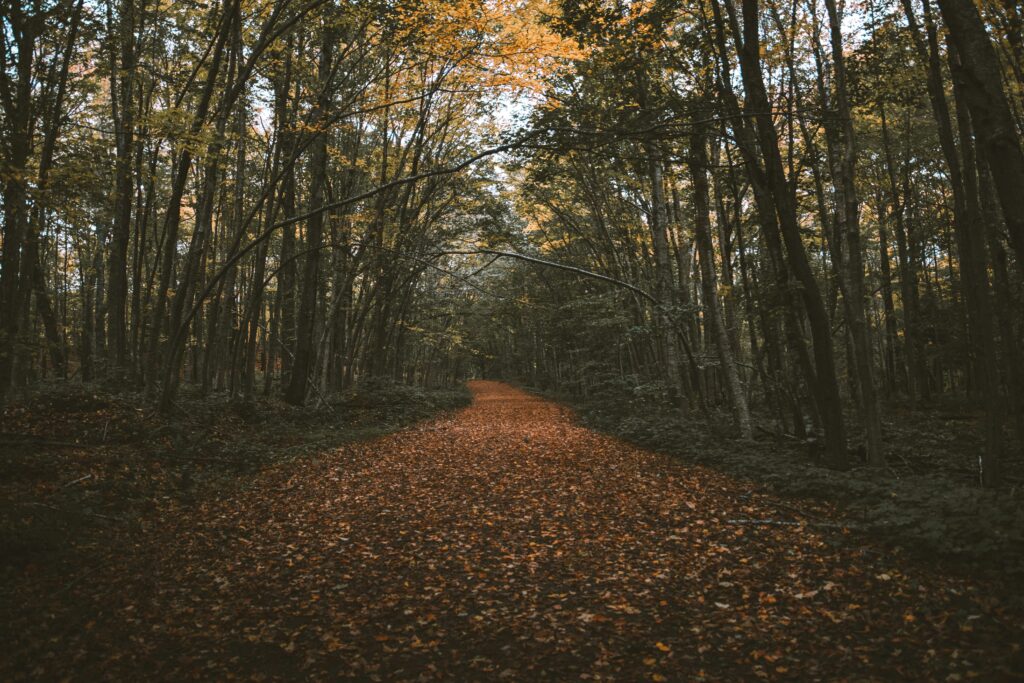
Porcupine Mountains Hiking Trails
Porcupine Mountains Wilderness State park offers some of the most stunning and diverse hiking experiences in the Midwest. So, here are some top Porcupine Mountains hiking trails:
1. Lake of the Clouds Trail:
Firstly, this is a short and easy trail leading to the iconic Lake of the Clouds overlook. It offers stunning panoramic views of the lake nestled between two ridges, surrounded by lush forest.
Difficulty: Easy
Suitability: It is suitable for all skill levels, including families with children and beginners.
2. Escarpment Trail:
Then, this trail follows the edge of the ancient Carp River Valley, offering panoramic views of Lake of the Clouds and the surrounding wilderness.
Difficulty Level: Moderate to Difficult
Suitability: It is recommended for experienced hikers due to some steep sections and elevation changes.
3. Summit Peak Trail:
Moreover, this moderate hike leads to the highest point in the Porcupine Mountains, Summit Peak Observation Tower. The trail winds through old-growth forest and rocky terrain before reaching the tower, which offers breathtaking views of the surrounding wilderness.
Difficulty: Moderate
Suitability: Moderate level of fitness required. It is suitable for hikers with some experience. Additionally, it is not recommended for those with mobility issues.
4. Presque Isle River Waterfalls Trails:
In addition to this, explore a series of beautiful waterfalls along the Presque Isle River, including Manabezho, Manido, and Nawadaha Falls. Multiple loop trails of varying lengths are available, offering opportunities to enjoy the sights and sounds of rushing water and lush forest.
Difficulty: Easy to Moderate (depending on the loop chosen)
Suitability: Various loops available, suitable for all skill levels. Families and casual hikers can enjoy shorter loops, while more experienced hikers can opt for longer ones.
5. Government Peak Trail:
Furthermore, this challenging trail leads to Government Peak, offering panoramic views of Lake Superior and the surrounding landscape. The trail features steep ascents, rocky terrain, and rugged conditions, providing a true wilderness adventure.
Difficulty: Challenging
Suitability: Recommended for experienced hikers with good fitness levels. Not suitable for beginners or those with mobility issues.
6. Little Carp River Trail:
Also, follow the Little Carp River through pristine forest, enjoying the tranquility of the river and its surroundings. This trail offers opportunities for backcountry camping and features varied terrain, including wooded areas, rocky sections, and river crossings.
Difficulty: Moderate to Strenuous
Suitability: Moderate level of fitness required. Suitable for hikers with some experience in varied terrain. Not recommended for beginners.
7. Big Carp River Trail:
Another trail, similar to the Little Carp River Trail, this longer and more challenging hike follows the Big Carp River and provides access to remote backcountry campsites. The trail features rugged terrain, steep ascents and descents, and opportunities to spot wildlife.
Difficulty: Strenuous
Suitability: Requires good fitness levels and hiking experience. It is suitable for experienced hikers looking for a remote wilderness experience.
8. North Mirror Lake Trail:
Furthermore, this scenic loop trail offers views of Mirror Lake and the surrounding forest. The trail winds through mixed hardwood and coniferous forests, providing opportunities for wildlife viewing and birdwatching.
Difficulty: Easy
Suitability: Suitable for all skill levels, including families with children and beginners. Moreover, it offers a peaceful hike with scenic views.
9. South Mirror Lake Trail:
Another loop trail around Mirror Lake, this hike offers serene views of the lake and opportunities for wildlife spotting. The trail features relatively flat terrain and easy walking, making it ideal for a leisurely stroll.
Difficulty: Easy
Suitability: Suitable for all skill levels, including families with children and beginners. It offers tranquil views of Mirror Lake.
10. Union Spring Trail:
Lastly, this moderate trail leads to Union Spring, a natural spring in the wilderness. The trail winds through mixed forest, offering glimpses of wildlife and native plants along the way. Additionally, Union Spring provides a peaceful spot to rest and enjoy the sounds of nature.
Difficulty: Moderate
Suitability: Moderate level of fitness required. It is suitable for hikers with some experience. Moreover, it offers a peaceful hike through the forest.
Planning Your Trip to Porcupine Mountains Hiking Trails?
Planning a hiking trip to the Porcupine Mountains, requires some preparation to ensure a safe and enjoyable adventure. So, here’s a comprehensive guide to help you plan your hiking trip:
1. Research and Plan Your Route
1.1 Trail Options:
Firstly, the Porkies offer over 90 miles of hiking trails ranging from short, easy walks to challenging multi-day backcountry treks. Popular trails include the Escarpment Trail, Lake of the Clouds, and the Big Carp River Trail. So, explore and choose according to your suitability.
1.2. Trail Maps:
Secondly, obtain a detailed map of the park. The Porcupine Mountains Wilderness State Park website and visitor centers provide up-to-date maps and trail conditions.
1.3. Difficulty Level:
Furthermore, choose trails that match your fitness level and experience. Also, some trails are steep and rugged, while others are more leisurely.
2. Obtain Necessary Permits
2.1 Backcountry Camping:
If you plan to camp overnight in the backcountry, you’ll need a permit. However, these can be obtained online or at the park’s visitor center.
2.2 Parking Permits:
Furthermore, ensure you have the necessary parking permits for the trailheads.
3. Pack Appropriately: Essential Gear List for Hikers in the Porcupine Mountains
To ensure a safe and enjoyable trip, it’s essential to be well-prepared with the right gear. So, here’s a comprehensive list:
3.1. Clothing
Firstly, for your clothing essentials, ensure you have:
- Moisture-wicking base layers (tops and bottoms) and Insulating layers (fleece or down jackets)
- Waterproof and windproof jacket
- Hiking pants/shorts (quick-drying) and Hiking boots (waterproof with good ankle support)
- Hat and gloves
- Wool or synthetic socks (multiple pairs)
3.2. Navigation
Secondly, navigation is critical to ensure you stay on course. So, for navigation you will need:
- Trail map of the Porcupine Mountains
- Compass and/or GPS device
- Guidebook for trail information
3.3. Shelter and Sleeping
Moreover, for shelter and sleeping, ensure you have:
- Tent (lightweight and weather-appropriate)
- Sleeping bag (temperature-rated for the season) and Sleeping pad (for comfort and insulation)
3.4. Food and Water
In addition to this, for nutrition and staying hydrated, make sure to bring:
- Hydration system (water bottles or hydration bladder, 2-3 liters per day)
- Water purification (filters, tablets, or UV purifiers)
- High-energy, non-perishable food (trail mix, jerky, energy bars, dehydrated meals)
- Stove and fuel (compact camping stove) and Cookware (lightweight pot, utensils, mug)
3.5. Safety and First Aid
Furthermore, have the following items in your first aid kit:
- First aid kit (customized with bandages, antiseptics, blister treatment, personal medications)
- Multi-tool or knife
- Fire starter (waterproof matches, lighter, tinder) and Whistle (for signaling in case of emergency)
- Personal locator beacon (PLB) or satellite messenger
- Bear spray (if bears are active in the area)
3.6. Miscellaneous
Additionally, here is a list of some miscellaneous items:
- Backpack (30-50 liters for day hikes or overnight trips)
- Trekking poles (for stability on rough terrain)
- Headlamp or flashlight (with extra batteries)
- Sunscreen and lip balm (for sun protection)
- Insect repellent (essential during mosquito season)
- Trash bags (to carry out all waste, following Leave No Trace principles)
- Camera or smartphone (for photos and GPS apps)
3.7. Seasonal Considerations
Also, for seasonal conditions, you will need:
- Snowshoes or microspikes (for winter or early spring hikes)
- Gaiters (to keep debris and snow out of boots)
3.8. Optional Items
Lastly, in addition to the above essentials, there are several optional items to consider:
- Binoculars (for wildlife viewing)
- Journal and pen (for recording experiences)
- Portable charger (for electronic devices)
Safety Tips for Hikers
When hiking in the Porcupine Mountains, safety should always be a top priority. So, here are some essential tips:
1. Plan Ahead:
Firstly, familiarize yourself with the trails, terrain, and weather conditions. Obtain a map of the area and plan your route accordingly.
2. Inform Someone:
Secondly, before heading out, let someone know your hiking plans, including your route and expected return time. This ensures that someone is aware of your whereabouts in case of an emergency.
3. Stay on Designated Trails:
Moreover, stick to marked trails to avoid getting lost or wandering into dangerous areas. Venturing off-trail can also disturb fragile ecosystems.
4. Pack Essentials:
In addition to this, bring plenty of water, snacks, a first aid kit, navigation tools (map and compass or GPS), a multi-tool, a flashlight or headlamp with extra batteries, a whistle, and a fully charged cell phone.
5. Dress Appropriately:
Also, wear sturdy hiking boots with good ankle support, moisture-wicking clothing, and layers to adjust to changing weather conditions. Don’t forget a hat, sunglasses, and sunscreen for sun protection.
6. Beware of Wildlife:
Furthermore, the Porcupine Mountains are home to various wildlife, including black bears and porcupines. Be aware of your surroundings, make noise while hiking to alert animals of your presence, and store food properly to avoid attracting wildlife.
7. Be Prepared for Weather Changes:
Additionally, weather in the mountains can be unpredictable. Bring rain gear and extra layers to stay warm and dry in case of rain or sudden temperature drops.
8. Mind Your Footing:
Moreover, watch your step, especially on uneven terrain, slippery rocks, or muddy trails. Use trekking poles for stability if needed.
9. Respect the Environment:
Also, leave no trace by carrying out all trash and waste. Respect wildlife and their habitats by observing from a safe distance and not feeding or approaching them.
10. Know Your Limits:
Lastly, know your fitness level and choose trails that match your abilities. Because hiking in the Porcupine Mountains can be physically demanding. Pace yourself and take breaks as needed.
Best Time to Visit Porcupine Mountains
The best time to hike in the Porcupine Mountains is during the autumn months, specifically from late September to mid-October. During this period, the dense forests that blanket the rugged terrain transform into a breathtaking tapestry of vibrant reds, oranges, and yellows as the leaves change color. Moreover, the crisp, cool air invigorates the senses, enhancing the overall hiking experience.
In addition, the trails are usually less crowded compared to the peak summer season, allowing for a more serene and immersive experience in nature. As you trek through the trails, you’ll be treated to stunning vistas overlooking Lake Superior and the surrounding wilderness, making it a truly unforgettable hiking adventure.
Guided Hikes and Tours
If you’re new to the area or prefer a more structured experience, consider joining a guided hike or tour. Additionally, park rangers and local guides offer a variety of tours, from educational walks focusing on the park’s natural history to more strenuous hikes to remote locations. However, guided tours are a great way to learn more about the park and its ecosystems.
Camping and Lodging Options
The Porcupine Mountains, offer a range of camping and lodging options for visitors to enjoy the natural beauty of the area. So, here are some options:
Camping Options:
1. Union Bay Campground:
Firstly, this campground is located near Lake Superior and offers both modern and rustic campsites. It’s a great option for tent camping or RV camping with amenities like restrooms, showers, and electric hookups.
2. Presque Isle Campground:
Secondly, this campground provides a serene setting for camping. It is situated near the Presque Isle River. Furthermore, it offers tent sites as well as rustic cabins for those looking for a more comfortable stay.
3. Backcountry Camping:
In addition to this, for those seeking adventure, they can camp in the backcountry. It is available in designated areas throughout the park. However, permits are required, and campers must adhere to Leave No Trace principles.
Lodging Options:
1. Porcupine Mountains Wilderness State Park Lodge:
Firstly, this lodge offers comfortable accommodations with stunning views of Lake Superior. Rooms range from standard to deluxe, and amenities include a restaurant, gift shop, and access to hiking trails.
2. Rustic Cabins:
Moreover, several rustic cabins are available for rent within the park, providing a cozy and secluded retreat amidst the wilderness. These cabins offer a rustic experience with basic amenities.
3. Nearby Resorts and Motels:
Lastly, outside of the park, there are also resorts and motels available for those who prefer more traditional lodging options. These establishments offer various amenities and are within driving distance of the park’s attractions.
Transportation Options to the Porcupine Mountains
Here are some general transportation options for getting to Porcupine Mountains:
1. By Car
Firstly, driving is the most common and convenient way to reach the Porcupine Mountains. You can access the area via major highways and roads. So, here are some key points:
- From Chicago: It takes about 6-7 hours. Take I-90 W, then merge onto US-45 N.
- From Minneapolis: It’s around a 5-hour drive. Take I-35 N, then merge onto US-2 E.
Once you reach the Upper Peninsula, follow signs to the Porcupine Mountains Wilderness State Park.
2. By Air
Secondly, the other way to reach Porcupine Mountains is by air. The nearest major airport is Gogebic-Iron County Airport (IWD) in Ironwood, Michigan, which is about 30 miles away. Moreover, this airport has limited flights, so you may need to connect through a larger hub.
Alternatively, you can fly into Duluth International Airport (DLH) in Duluth, Minnesota, or Sawyer International Airport (MQT) in Marquette, Michigan, both of which are a few hours’ drive from the Porcupine Mountains. Also, renting a car at the airport is recommended.
3. By Bus
Moreover, bus services are limited in the Upper Peninsula. Greyhound and other major bus lines do not typically have routes directly to the Porcupine Mountains. The nearest bus stop is usually in a larger town such as Ironwood, where you can then rent a car or arrange for a local shuttle or taxi service.
4. By Train
Furthermore, there are no direct train services to the Porcupine Mountains. The nearest Amtrak station is in Milwaukee, Wisconsin. So. from there, you would need to drive or take other transportation to reach your destination.
5. Local Transportation
Lastly, once you arrive in the area, the best way to get around is by car. The park is large and spread out, making a personal vehicle the most practical option for exploring the trails, waterfalls, and other scenic spots.
Conclusion
In conclusion, the Porcupine Mountains Wilderness State Park is a treasure trove of natural beauty and adventure. Whether you’re an experienced hiker seeking challenging trails or a family looking for a scenic day hike, the Porkies offer something for everyone. With its rich history, diverse wildlife, and stunning landscapes, this park is a must-visit destination.
Hope you found this article on Porcupine Mountains Hiking trails helpful! Click here and check out our more articles on hiking adventure.

